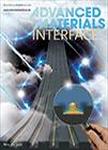版权所有:内蒙古大学图书馆 技术提供:维普资讯• 智图
内蒙古自治区呼和浩特市赛罕区大学西街235号 邮编: 010021

作者机构:Case Western Reserve Univ Dept Mech & Aerosp Engn Lab Soft Machines & Elect Cleveland OH 44106 USA Qingdao Univ Sch Mat Sci & Engn Collaborat Innovat Ctr Marine Biobased Fiber & Ec Inst Marine Biobased MatState Key Lab Biofibers Qingdao 266071 Peoples R China MIT Dept Civil & Environm Engn Cambridge MA 02139 USA 4D Maker LLC Okemos MI 48864 USA
出 版 物:《ADVANCED MATERIALS INTERFACES》 (Adv. Mater. Interfaces)
年 卷 期:2022年第9卷第22期
核心收录:
学科分类:08[工学] 0805[工学-材料科学与工程(可授工学、理学学位)] 080502[工学-材料学] 0703[理学-化学]
基 金:National Science Foundation [ECCS-2024649] US DOT [693JK32050003CAAP] Case Western Reserve University
主 题:human-machine interface respiratory monitoring self-powered sensors smart system control triboelectric nanogenerators
摘 要:Innovative human-machine interfaces (HMIs) have attracted increasing attention in the field of system control and assistive devices for disabled people. Conventional HMIs that are designed based on the interaction of physical movements or language communication are not effective or appliable to severely disabled users. Here, a breath-driven triboelectric sensor is reported consisting of a soft fixator and two circular-shaped triboelectric nanogenerators (TENGs) for self-powered respiratory monitoring and smart system control. The sensor device is capable of effectively detecting the breath variation and generates responsive electrical signals based on different breath patterns without affecting the normal respiration. A breathing-driven HMI system is demonstrated for severely disabled people to control electrical household appliances and shows an intelligent respiration monitoring system for emergence alarm. The new system provides the advantages of high sensitivity, good stability, low cost, and ease of use. This work will not only expand the development of the TENGs in self-powered sensors, but also opens a new avenue to develop assistive devices for disabled people through innovation of advanced HMIs.